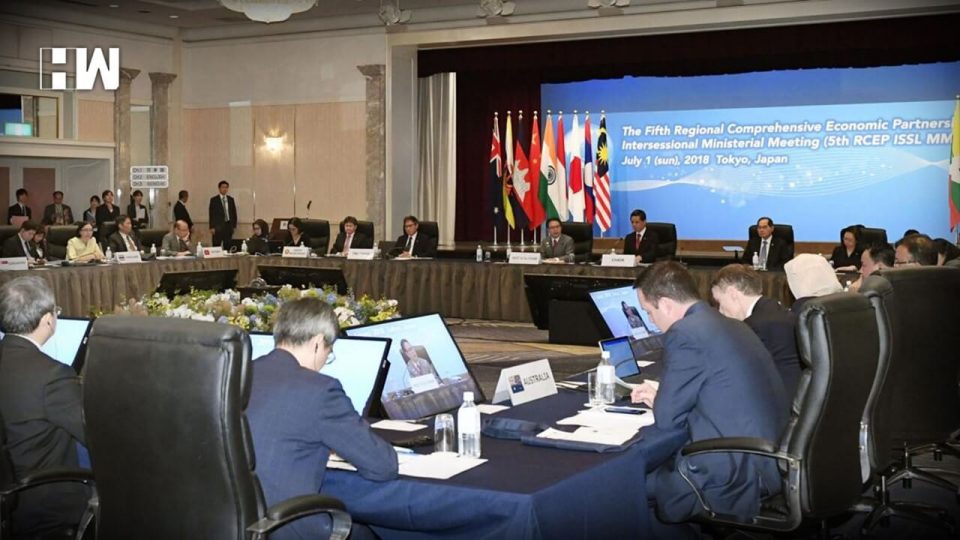Trade ministers and officials from 16 Asian countries have agreed to speed up negotiations on outstanding issues and reach a basic agreement on a regional trade pact by the end of this year.
During weekend meetings, Prime Minister Shinzo Abe urged fellow leaders to work for an early conclusion of the Regional Comprehensive Economic Partnership in the face of an increasingly protectionist US.
Japan has sought to take leadership in shaping the pact as an alternative to a Pacific Rim free-trade grouping that Trump abandoned early this year, the Trans-Pacific Partnership.
At a joint news conference yesterday after the talks, Japanese Economy, Trade and Industry Minister Hiroshige Seko and his Singaporean counterpart, Chan Chun Sing, noted there are differences that still need to be resolved, but the participants see reaching an accord as evidence of Asia’s commitment to defending free trade.
“This is indeed a moment for us to seize the opportunity against a global backdrop where we are facing headwinds in the trade relationships and the trade regimes,” Chan said. Achieving a pact would be a powerful statement to show what RCEP countries stand for, he said.
In a joint statement, the ministers said achieving a pact is important especially “in view of the current global trade environment, which faces serious risks from unilateral trade actions and reactions, as well as their debilitating implications on the multilateral trading system.” They also pledged to seek breakthroughs in politically challenging areas.
In his remarks earlier today, Abe said a pact among the countries that together make up half the global population has enormous growth potential.
“As we are faced with concerns of the rise of protectionism in the world, all of us in Asia must unite, and our future depends on whether we can keep hoisting our flagship principle of free and fair trade,” Abe told the meeting in Tokyo.
“Let us be as one and achieve a free, fair and rules-based market in this region.” Trump, who says he prefers bilateral deals, has pulled the U.S. out of the TPP, leaving the remaining 11 countries, from Chile to New Zealand, to work on a revamped version of that pact. Japan is a leading participant in those talks, too.
Trump has imposed high tariffs on steel and aluminum imports and has threatened to add automobiles to reduce America’s trade deficit. He has singled out Chinese products, prompting fears of a trade war.
Already hit by increased U.S. steel and aluminum tariffs, Japan has told the World Trade Organisation that it may retaliate against U.S. goods totaling about 50 billion yen (USD 450 million).
Tokyo warned the U.S. Department of Commerce on Friday that a higher U.S. tariff on auto imports could backfire, jeopardizing hundreds of thousands of American jobs created by Japanese automobile industry-related companies, raising prices for U.S. consumers and causing a disaster for the U.S and global economy.
Trump’s moves have resonated in Asia, where many countries have prospered thanks to free trade and the expansion of global supply chains.
Members of the initiative, launched in 2013, have struggled with issues including tariffs, trade in services and investment rules, as well as protection for intellectual property rights. Japan is also cautious about China’s influence. China, which is not part of the TPP, plays a key role in RCEP.
RCEP also includes Southeast Asia, Australia, New Zealand, India and South Korea.
As an independent media platform, we do not take advertisements from governments and corporate houses. It is you, our readers, who have supported us on our journey to do honest and unbiased journalism. Please contribute, so that we can continue to do the same in future.

